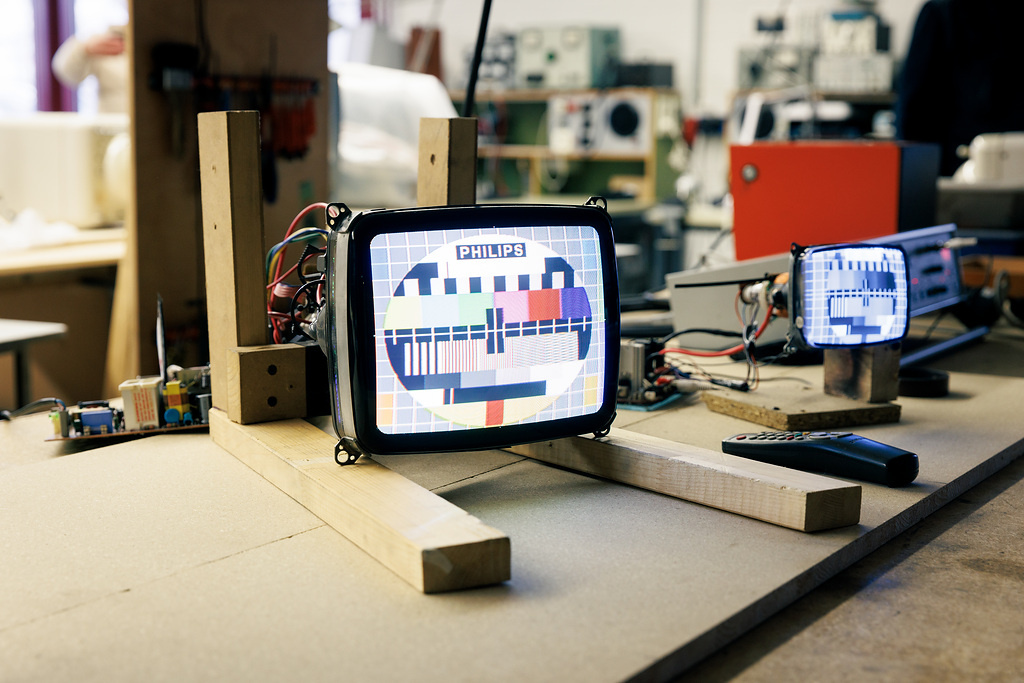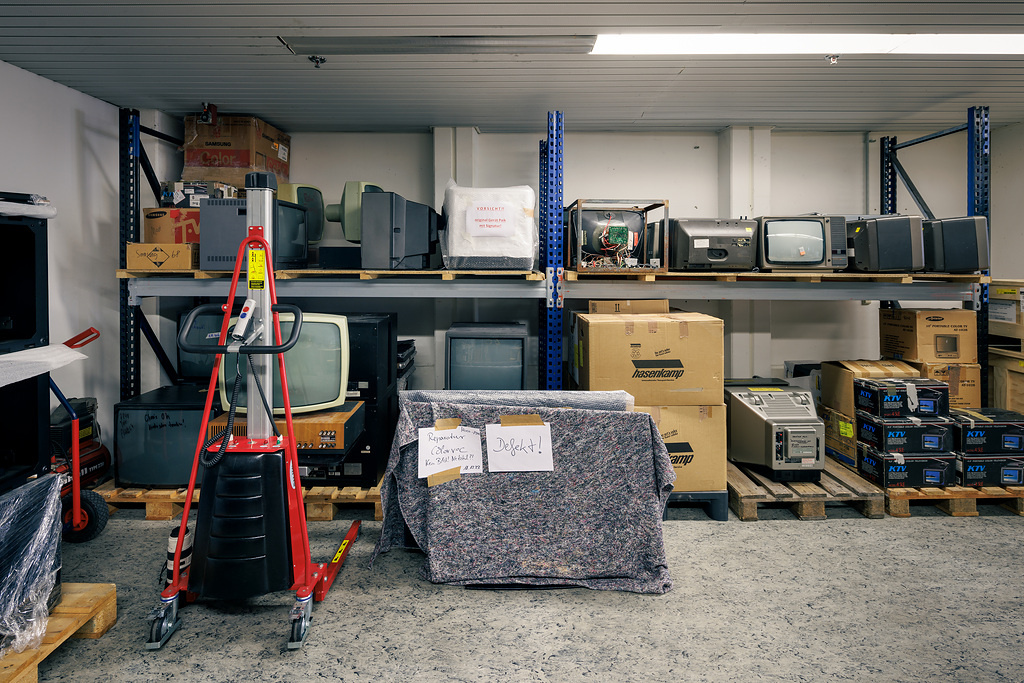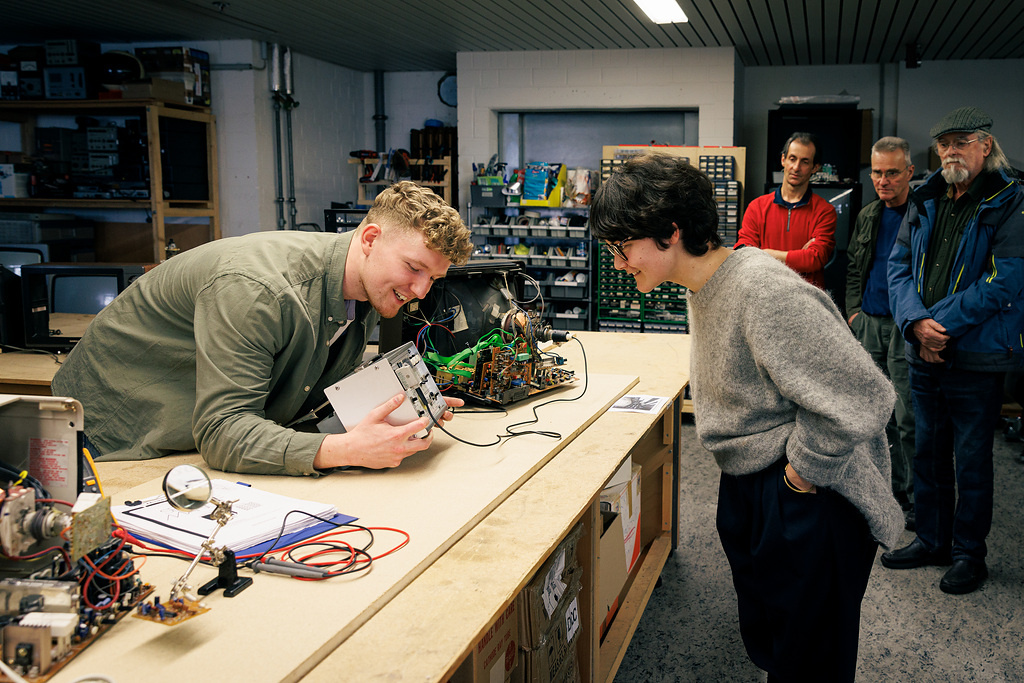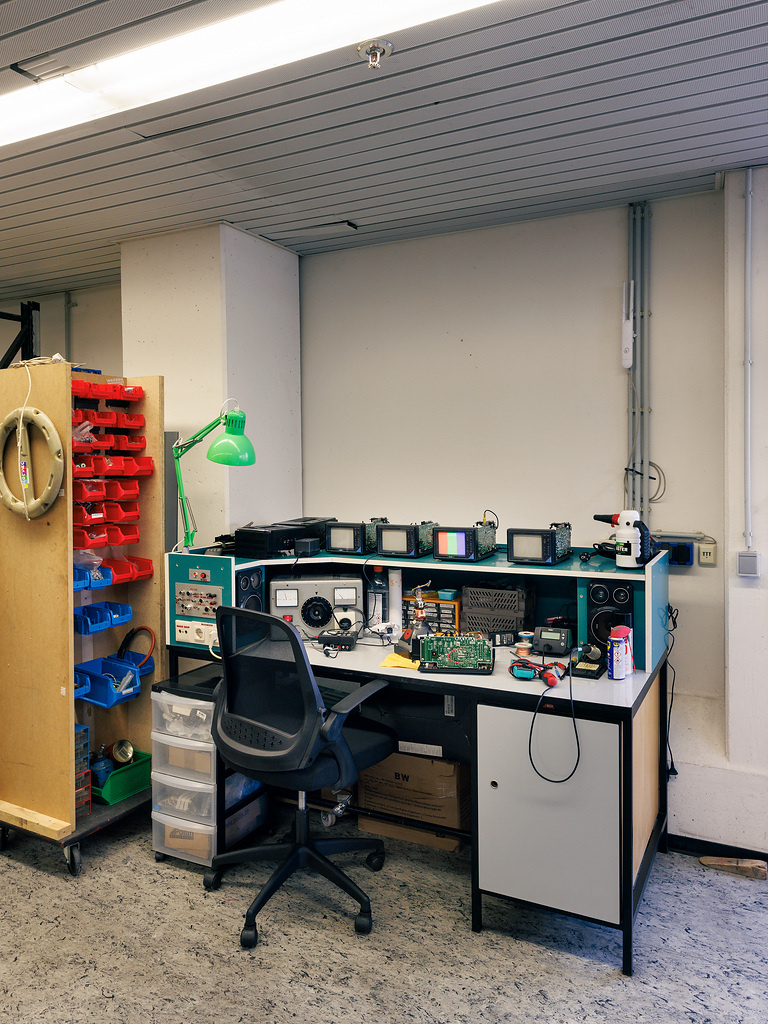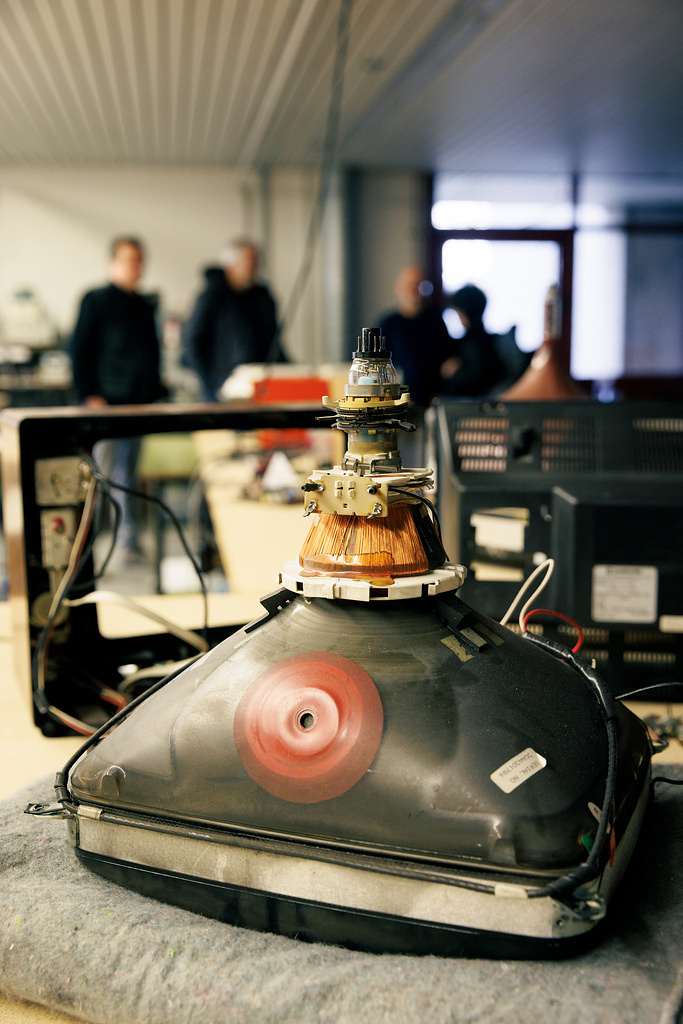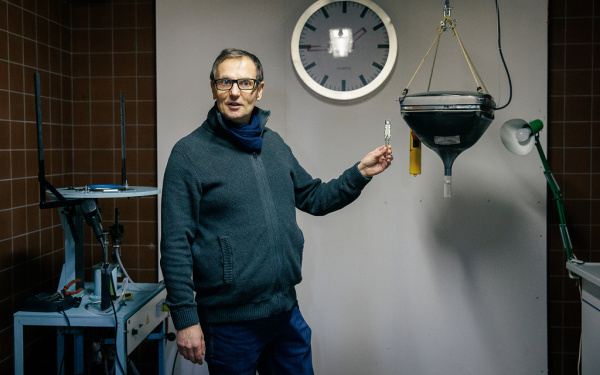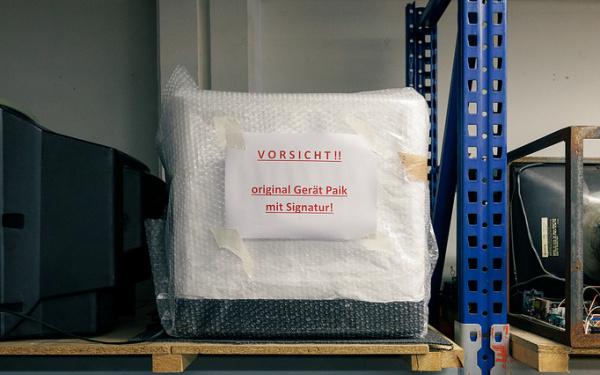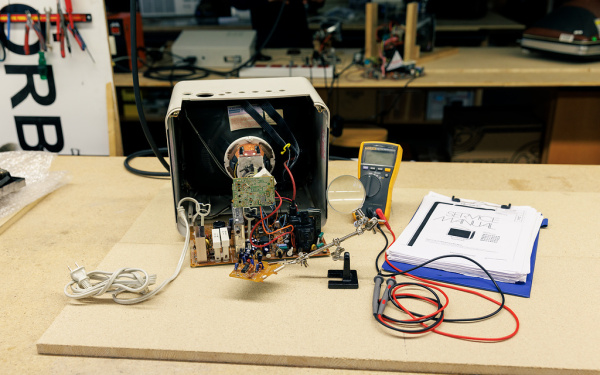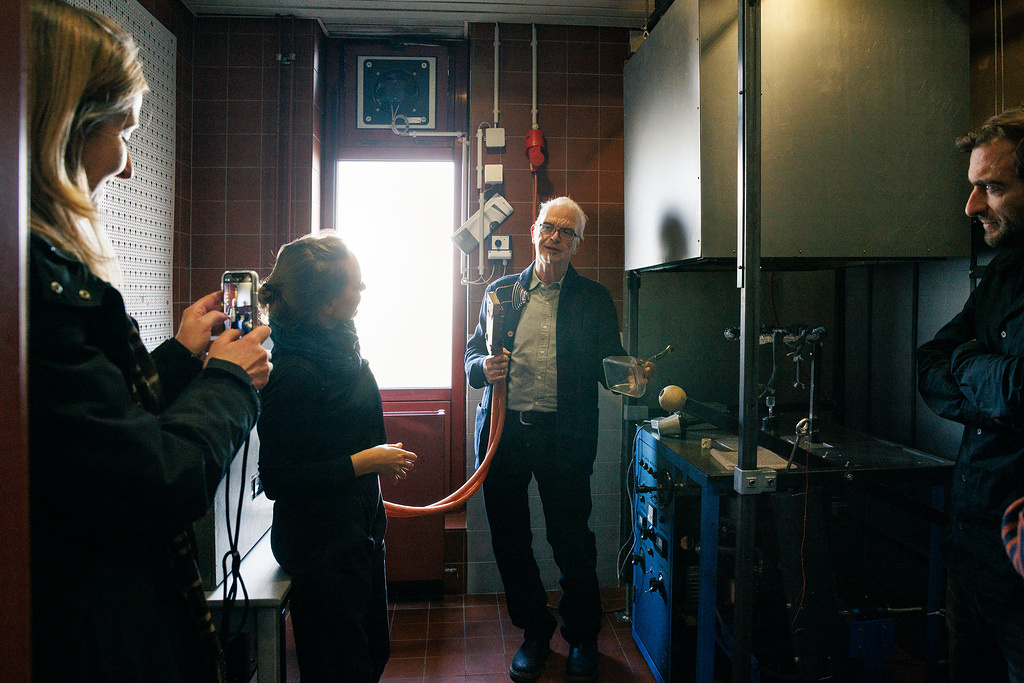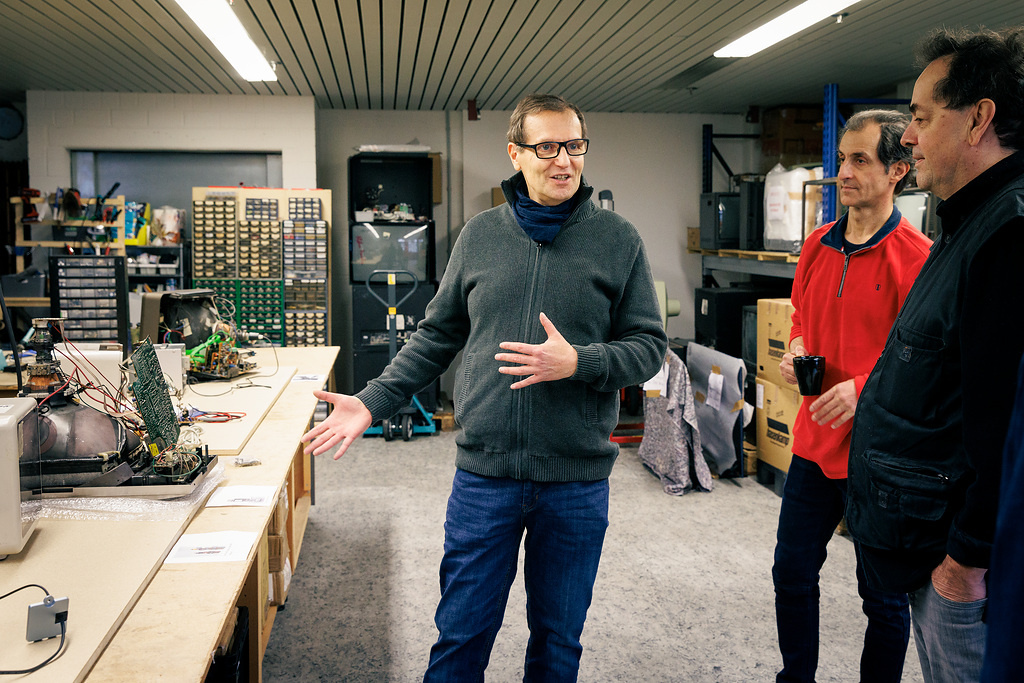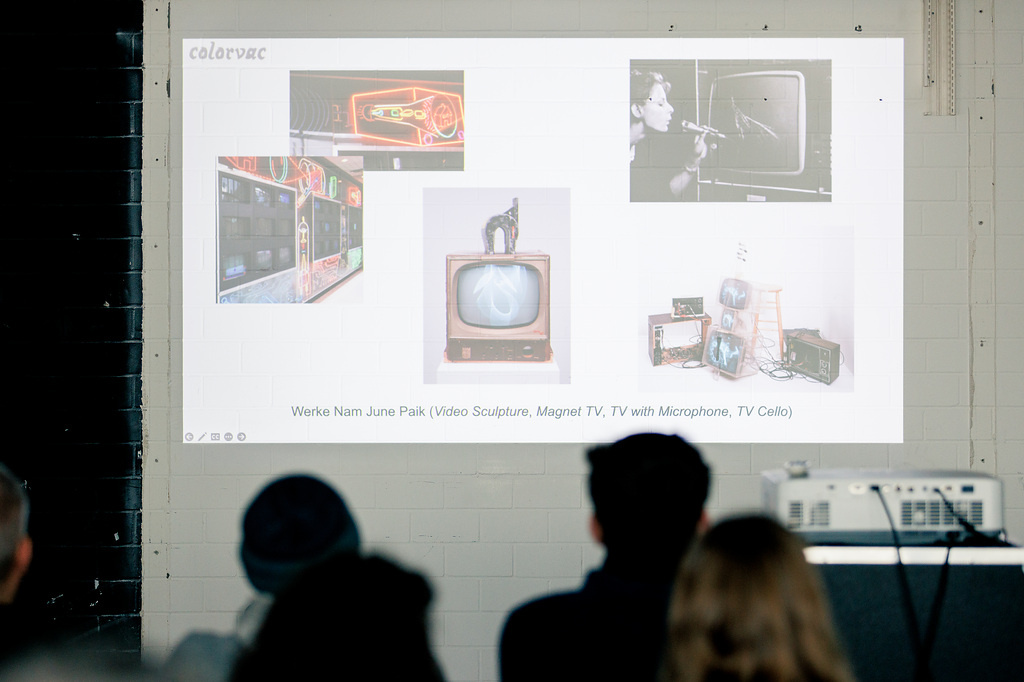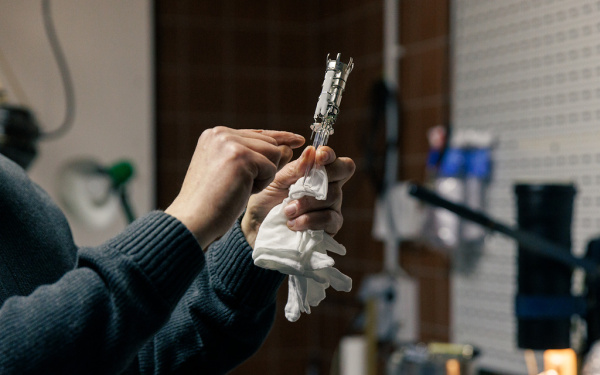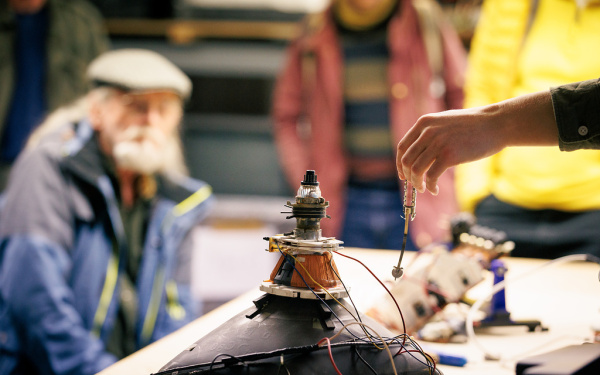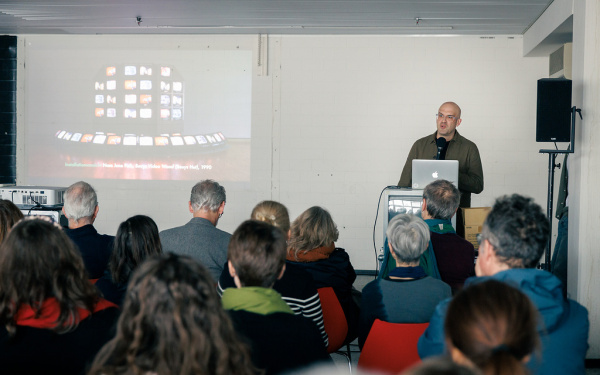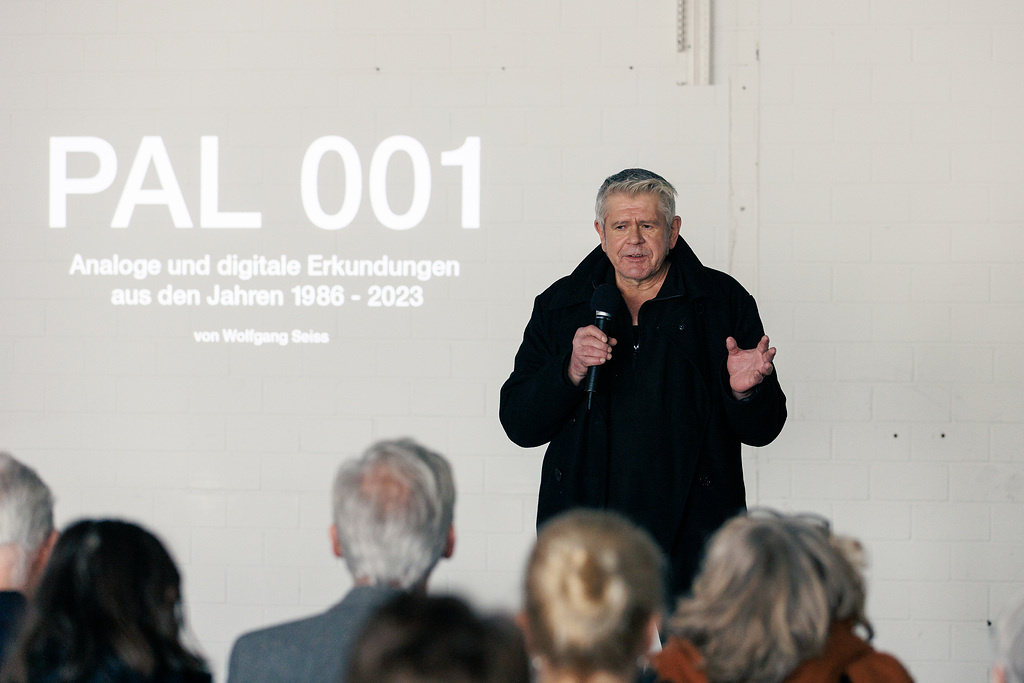COLORVAC
Laboratory for the Conservation of CRT Monitors
Video Art is one of the most important art forms of the twentieth century. A pioneering example of an experimental approach to television as a medium was Nam June Paik’s 1963 Exposition of Music – Electronic Television at Galerie Parnass in Wuppertal, where Paik presented twelve technically modified TV sets. When portable video equipment first became available in the form of the Sony Portapak (DV 2400), artists around the globe began experimenting with video. Their works were presented on tube television sets (CRT monitors) – devices which are still indispensable today. They are an integral component of video installations and are indispensable for the presentation of historical videos.
The tube television set is the quintessential electronic device of the twentieth century, shaping day-to-day life, culture, and art since the 1950s.
With the introduction of LED technology around 2010, TV sets based on cathode ray tubes went out of production. Since then, no new devices or spare parts have been produced. This puts public and private collections in danger of losing valuable and historically significant works of video art. The situation is exacerbated by the impending loss of expert knowledge, as the last generation of TV technicians trained in working with CRT monitors will no longer be available soon.
If video art is to be preserved for future generations, new procedures must be developed in order to preserve CRT monitors. Without such a solution, it will become impossible to exhibit a vast majority of these works within 20 to 30 years.
That is why the ZKM is building a partnership with COLORVAC. The company was founded in 2017 by Christian Draheim in Leverkusen and is the world’s only workshop dedicated to the maintenance and preservation of CRT technology. Draheim brings many years of experience in the manufacturing of industrial monitors to the table. Early on, he worked in his father’s TV repair workshop. Today, Draheim – along with his wife Claudia and son Florian – runs COLORVAC to preserve video art for collections and museums around the world.
In 2021, the Draheim Family moved their workshop to Karlsruhe to partner with the ZKM’s team on the research necessary in order to ensure the passing-down of expertise in the preservation of CRT technology.
On the Loss of CRT Technology
CRT television sets and computer screens were industrially produced on a global scale for more than 80 years, from 1934 until around 2015, and are one of the formative technologies of the twentieth century. In 2005, sales of tube television sets peaked at approximately 130 million devices sold worldwide. In 2006, the cathode ray tube was replaced by LCD (Liquid Crystal Display) technology, which then gave way to LED and subsequently OLED displays. In 2008, when global sales of LCD panels first overtook CRTs, Sony closed down its last remaining production facilities. Around 2014, previously strong markets such as India disappeared. The production facilities for the glass, ceramic, vacuum technology and electronics were dismantled and remaining stock disposed of. The commercial production of CRT monitors will not resume. As a result of this shutdown, expert knowledge about the components and workings of cathode ray tubes is also beginning to disappear.
CRT Lab for Research and Knowledge Transfer
The aim of the partnership between COLORVAC and the ZKM is to create a CRT Lab for the restoration and research into preservation of CRT monitors as well as the development of a professional training program. To date, academic and professional training programs for restoration specializing in electronic art forms are few and far between. What is more, due to the broad diversity of electronic media, existing programs can only offer superficial insights into the problem of CRT conservation. Research programs geared towards the long-term preservation of CRT monitors have yet to exist at all. The new CRT Lab will be a research and education center operating on a global scale in cooperation with other art and research institutions as well as individual conservators.
Currently, maintenance of CRT monitors relies heavily on the availability of vintage spares to replace broken components. The CRT Lab will develop and improve devices and procedures to enable the long-term maintenance of CRT monitors independent of vintage spare parts, which will not be available indefinitely. To this end, the industrial processes for producing CRT monitors and components must be transposed onto the scale and capabilities of small manufacturing facilities. Equipment and procedures must be constructed and defined in ways that will be accessible to future generations.
The research focuses on two technical elements: the picture tube and the electronic controls (chassis).
Sustainability is ensured on three levels:
- Independence from vintage spares through in-house manufacturing
- Utilization of simple, universal components with long-term availability
- Simplification of procedures in order to facilitate access for future generations
International Networks
Not only museums and collectors, but also highly specialized businesses such as CTL Electronics (New York) or bek & frohnert (New York) have turned to Christian Draheim and COLORVAC for their expertise. The ZKM has also supported other institutions in restoring electronic and digital art for many years. Going forward, the CRT Lab will make it possible to systematically develop this activity and offer the restoration of video art installations as a service.
Picture Tubes: Manufacturing New Components
When a picture tube turns dull or no longer works, this can be due to a variety of reasons. For instance, the vacuum inside the tube can be compromised by free molecules, or the metal coating of the cathode’s electron cannons can deteriorate and no longer be able to emit enough electrons.
Repairing a picture tube requires opening up the glass envelope, reliably removing the electron cannons from old systems and replacing the broken ones, and resealing the glass envelope. This procedure has proven effective many times. It requires equipment such as a high-vacuum pumping unit with tempering furnace (heating hoods), glass working lathes, high-frequency generators, electrical discharge machining units up to 70kV (Tesla generators), glass working tools and equipment, vacuum devices, as well as measuring and testing instruments from the fields of glass technology, electronics, and vacuum technology.
So far, deficient cathodes were replaced with identical parts. The research project aims to develop procedures for refurbishing and manufacturing cathodes and heating filaments in order to become independent from legacy part supplies. Components required for this are universal and will continue to be available in the long term. This approach would enable the preservation of any picture tube.
Manufacturing the heating filaments and removing the old cathode layer and re-coating the cathode or manufacturing a new cathode requires modifications to existing devices as well as the procurement of new equipment.
The CRT Lab will partner with former employees of CRT manufacturers such as Philips as well as academic institutions (University of Tübingen) in developing the required equipment.
Construction of a Universal Chassis
In addition to restoring the picture tube, fully refurbishing a CRT monitor for a new lifecycle also requires replacing the electronics board (chassis). This research project aims at developing four universal electronic boards in order to make this possible without relying on the supply of vintage spare parts as well. The boards can be created using relatively simple means, independent of long-term developments in the industry. With four models (three boards for color screens, one for monochrome screens), the majority of picture tubes used in the art world can be preserved.
The boards will be manufactured using universal electronic components which have been available for decades and are still in use today. Its circuitry can be manufactured by the Lab using semiconductors. This can be simplified by purchasing available integrated circuits from the industrial production of CRTs. In this case, stockpiling spares is a viable option because these circuits are made of silicon, which is shelf stable over several centuries.
1. Restoration
In addition to its research, the CRT Lab will continue engaging in the restoration of video art during the first three years, albeit at reduced volume. Because of the impending loss of expertise due to the age of the remaining TV specialists, documenting this knowledge and developing procedures will be a priority during this initial phase.
2. Knowledge Transfer
The CRT Lab offers two key contributions to knowledge transfer, namely the documentation of historical knowledge and the handing-down of this knowledge to the next generation. Public art institutions must act quickly in order to preserve the knowledge surrounding CRT technology, as the industrial shift not only put an end to the production facilities for CRT tubes, but also to the corresponding places of training and knowledge transfer.
3. Documentation of Technical Knowledge
Together with the remaining experts in TV technology, the specialist knowledge from the industrial production of CRT monitors will be documented and practically tested at the Laboratory. This historical knowledge will be preserved and cultivated at the CRT Lab, which is part of an art institution which also operates as a museum. In the long term, the plan is to establish picture tube manufacturing workshops in additional locations together with international museums in the United States and Korea in order to further secure this knowledge for future generations with institutional backing.
4. Education
Preserving the specialist knowledge requires systematic education for coming generations of conservators in working with CRT monitors. Once the procedures for refurbishing the picture tubes and manufacturing the universal chassis are established, there will be a systematic offering of workshops, professional development trainings, and internships in cooperation with the study programs of the participating universities and academies.
International Demand and Cooperations
The CRT Lab is being created in response to an international demand from institutions which hold extensive collections of video installations. Museums and art institutions with the largest collections around the world include:
Museums
- Daimler Art Collection, Stuttgart
- Deichtorhallen, Hamburg
- Centre Pompidou
- Friedrich Christian Flick Collection, Berlin
- Fondation Louis Vuitton, Paris
- Folkwang Museum, Essen
- Guggenheim Museum, Bilbao
- Kaiser Wilhelm Museum, Krefeld
- Kramlich Collection
- Kunstmuseum, St. Gallen
- Kunstmuseum Wolfsburg, Wolfsburg
- Kunstmuseum Düsseldorf
- Kunstsammlung NRW, Düsseldorf
- Leeum Samsung Museum of Art, Seoul
- Ludwig Forum, Aachen
- M+, Hongkong
- MoMA Smithsonian, San Francisco
- MNK Frankfurt
- MONA, Museum of Old and New Art, Hobart, Tasmania
- Münchner Stadtmuseum, München
- Museum Ludwig, Köln
- Museum M+, Hong Kong
- Nam June Paik Art Centre, Südkorea
- National Museum of Modern and Contemporary Art, Korea
- New York University, New York
- Sammlung Brandhorst, München
- Sammlung Harald Falckenberg, Hamburg
- Staatsgalerie, Stuttgart
- Stedelijk Museum, Amsterdam
- Stiftung Museum Kunstpalast
- Tate Modern, London
- Weltkulturerbe Völklinger Hütte, Völklingen
- Whitney Museum of American Art, New York
- ZKM | Zentrum für Kunst und Medien, Karlsruhe
Galleries
- Paul Pfeiffer Gallery, New York
Conservators
- Studio Redivivus, Den Haag
- Bek & Frohnert, New
New Laboratory for the Preservation of Video Art
Large parts of our audiovisual heritage are facing an acute threat of extinction. Spare parts for vintage playback devices are no longer being produced. At the same time, fewer and fewer experts with the required knowledge for restoring them are available. Colorvac, the leading laboratory for the preservation of CRT monitors in the video art world has been tackling this challenge for years with unwavering dedication and unmatched expertise. In early 2024, a new location was opened in partnership with the ZKM | Karlsruhe.
The Colorvac laboratories are the only facilities in the world equipped for the complex tasks of preserving cathode ray tube monitors, which play an indispensable role for historic video art. „Today, the preservation of picture tubes is an art in itself. We are developing procedures that will enable future generations to continue this practice. This is an essential goal of our research“, says lead investigator Christian Draheim.
The partnership between Colorvac and the ZKM is based on a shared commitment to research and training in the field of video art conservation. Future projects include research into developing procedures and tools for small-scale manufacture of components. This is in response to the problems arising from the fate of the industrial production of CRT monitors, which ended in 2014, when the last factory was shut down. The project plays an essential role in preserving video art installations, as it will soon become impossible to source vintage picture tubes and spare parts needed to preserve historic video art.
In order to secure the longevity of video artworks in public and private collections, Colorvac and the ZKM are also planning to develop seminars in which young conservators will acquire the skills and knowledge needed to maintain vintage picture tubes. The partnership is an important step towards the long-term conservation of video installations.
About Colorvac
Founded in 1962 by Peter Draheim, who led the company until 2006, Colorvac specializes in the refurbishment of tube monitors. Since its re-formation in 2015 under Christian Draheim, the laboratory restores video art installations for major museums around the world and continuously develops new methods for preserving CRT monitors.
